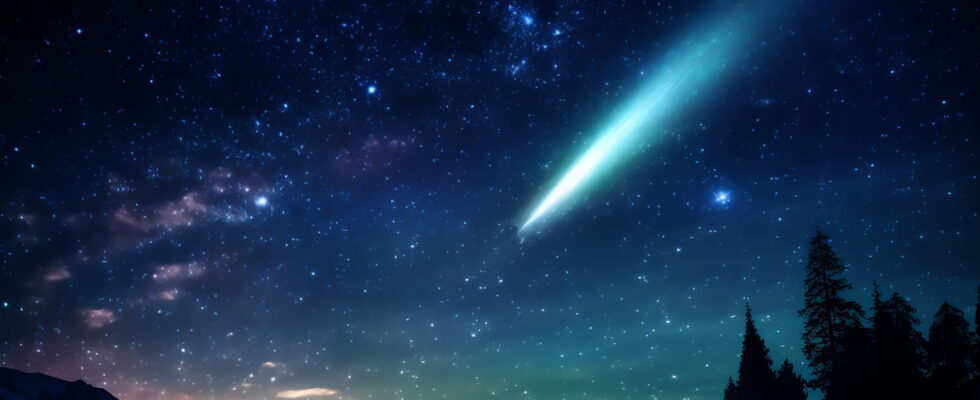100 times brighter than any other comet, Tsuchinshan-ATLAS is preparing to light up the sky this weekend!
Celestial bodies composed of rocks and ice, comets offer an unparalleled spectacle when they approach Earth, leaving long clouds of gas trailing in the sky. This weekend, a comet is coming closer and keeping scientists in suspense as it approaches the Sun. This comet which comes from the Oort cloud is distinguished by its exceptional luminosity, estimated 100 times brighter than all the other comets observed during the 21st century.
This is the comet C/2023 A3, named Tsuchinshan-Atlas in homage to the two observatories at the origin of its discovery: the Purple Mountain Observatory of Tsuchinshan in China in January 2023, followed by the ATLAS program telescope on February 22, 2023, who discovered it the following month from South Africa. This comet quickly attracted attention because of its brilliance. This Friday, September 27, it reaches its perihelion, its shortest distance from the Sun, at approximately 59 million kilometers.
To take the chance to contemplate it this weekend, the Paris Observatory recommends observing it until Monday September 30, every morning at dawn at least one hour before sunrise, above the east-southeast horizon. The spectacle will be visible to the naked eye although it may be advisable to equip yourself with binoculars to observe it better. The ideal is to choose a site offering a clear horizon, far from light pollution, in the direction indicated. Little tip: to find out when and where to look for it from wherever you are, use the Star Walk 2 application, downloadable to your smartphone.
Then, if you miss the appointment this weekend or you are absolutely not an early riser, it will be possible to observe the comet in the evening from Sunday October 13, when it will be closest from Earth, 71 million kilometers. You will need to look at a clear western horizon, at least an hour after sunset. It will even be possible to observe its tail higher and higher in the sky, reflecting the light of the Sun.
Its approach to Earth is a rare event eagerly awaited by scientists. Examining the current data by the IMCCE, there is a strong chance that comet Tsuchinshan-Atlas will rise to the rank of large comet by becoming the brightest in the Northern Hemisphere, with an apparent brightness estimate of – 3 to -4, since Hale-Bopp in 1997, which then had a maximum magnitude of -1.8. Now that you know everything, don’t miss this celestial spectacle because its last passage near the Sun dates back around 80,000 years!
